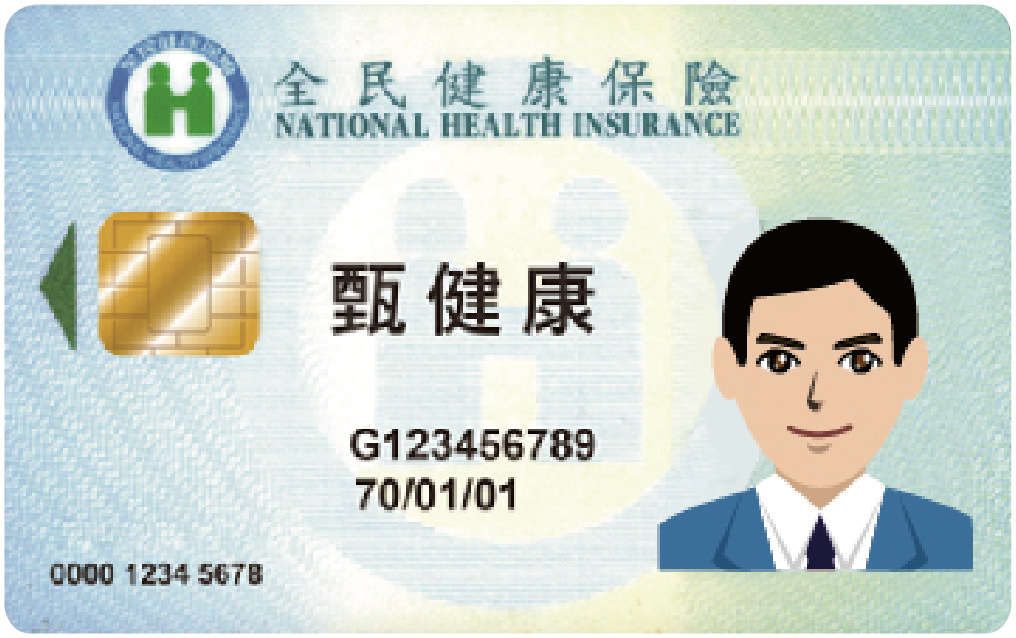When individuals enroll in the National Health Insurance program, they have to apply for a National Health Insurance Card. The card is proof that a person enrolls in National Health Insurance program, and it must be presented every time you visit a clinic or hospital. Please keep it carefully.
The National Health Insurance Administration adopted the use of an NHI card for all individuals enrolled in the program beginning on January 1, 2004. The card generally carries a picture of the insured, making it unnecessary to bring your ID to a medical institution when seeking medical attention. The chip embedded in the card stores records of your last six medical visits, information on catastrophic illness, records of all important tests, and medication information, which will be helpful when patients see a doctor.
Get to know your NHI card

I. Front of NHI card
The NHI card has your name, ID number, birth date, and your picture. There is an IC chip embedded in the card, and this chip itself has four areas for storage of data: personal information, NHI information, medical area, and health administration area. A card reader can read or write to the IC card. There is a serial number on the bottom left corner of the card.
II. Back of the card
The back of the NHI card informs the cardholder on what to do when using the card to seek medical attention or when the card has been lost. A hotline for inquiries is also on the back of the card: 0800-030-598. Call the number for questions about NHI, free of charge.
III. Card security
The NHI card is made of PETF material, and the card uses anti-counterfeiting measures such as guilloche rainbow patterning (gradient), extra small print, UV hidden print, fluorescent ink, optically variable ink (OVI), and anti-copy coloring.
IV. Content
The IC chip in the card has four areas for storage of data: personal information, NHI information, medical area, and health administration area.

